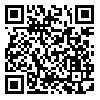Volume 19, Issue 127 (2022)
FSCT 2022, 19(127): 193-209 |
Back to browse issues page
Download citation:
BibTeX | RIS | EndNote | Medlars | ProCite | Reference Manager | RefWorks
Send citation to:



BibTeX | RIS | EndNote | Medlars | ProCite | Reference Manager | RefWorks
Send citation to:
sistani S, Shekarchizadeh H. Applications of carbon quantum dots in detection and packaging of foods. FSCT 2022; 19 (127) :193-209
URL: http://fsct.modares.ac.ir/article-7-60568-en.html
URL: http://fsct.modares.ac.ir/article-7-60568-en.html
1- Graduated Master, Department of Food Science and Technology, College of Agriculture,Isfahan University of Technology , shabnam668.ss@gmail.com
2- Associate Professor, Department of Food Science and Technology, College of Agriculture,Isfahan University of Technology
2- Associate Professor, Department of Food Science and Technology, College of Agriculture,Isfahan University of Technology
Abstract: (3140 Views)
Carbon quantum dots are a new generation of carbon nanoparticles that have good potential for food analysis and packaging due to their unique properties such as excellent fluorescence properties, easy synthesis, good biocompatibility, large functional groups, and low toxicity. Today, carbon quantum dots have replaced semiconductor quantum dots due to their non-toxicity. The use of carbon dots in packaging materials due to their antioxidant, antimicrobial and barrier properties increases product shelf life, reduces the growth of microorganisms, improves mechanical properties, the barrier against gases, UV light blocker, and reduces food waste. This paper aims to get acquainted with carbon quantum dots and synthesis methods and study their optical properties. Then, the principles of fluorescence sensor design, including the mechanism of fluorescence quenching and recovery and their application in food samples to detect food additives, pathogens, antibiotic residues, insecticides, heavy metals, and nutrients will be examined. Finally, the use of carbon dots in improved, active, intelligent and bio-packaging will then be discussed.
Article Type: Analytic Review |
Subject:
Nanotechnology in the food industry (nanoparticles, nanocapsulations, nanomolies, etc.)
Received: 2022/04/4 | Accepted: 2022/06/20 | Published: 2022/09/1
Received: 2022/04/4 | Accepted: 2022/06/20 | Published: 2022/09/1
Send email to the article author
| Rights and permissions | |
 |
This work is licensed under a Creative Commons Attribution-NonCommercial 4.0 International License. |









